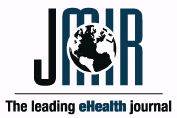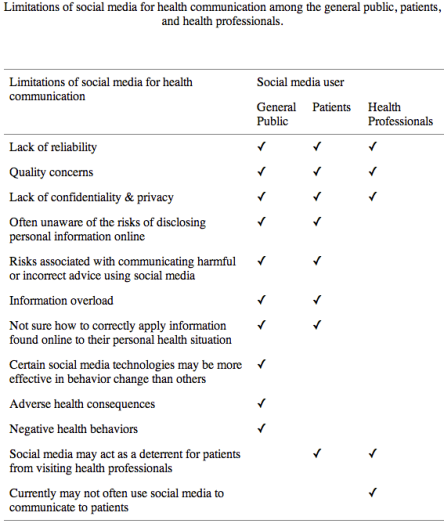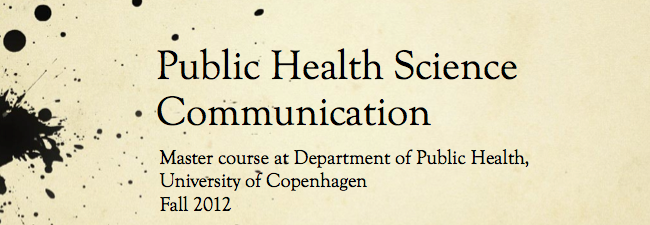Earlier this week I had an opportunity to give a talk not on general science communication but with a zoom on social media and science communication. A field I truly feel at home in, am confident talking about and find super interesting.
The talk was in Danish and given to young researchers attending a Media course for researchers organized by the Danish newspaper Information (Informations Medieskole).
With only 45 minutes at hand I prepared a presentation of about 25 minutes, which seemed so little when there is so much to say and so many examples to share. It was a fine balance to find out whether to give a general introduction (including: what is social media?) or to give a more practical “this is how you get started” presentation. I chose to go for the first solution with a strict programme:
- What is social media? (5 min)
- How and for what can it be used? (5 min)
- Examples (10 min)
- Advantages, strengths, risks, limitations (10 min)
- Questions/discussion
As expected questions related to “how do I get started” popped up and so to say interrupted the flow a bit, but I guess that this, especially in new fields, is a common challenge and can really only be solved by allowing for more time or perhaps even a whole separate course on how to dive into social media as a researcher. If I was to do the later, I think I would have tried to build it around myself, and show how I got on board and started out from absolutely scratch. I could perhaps even have included a slide on my way to social media into my slides on this occasion. Perhaps I’ll do that next time.
Focusing on blogs, Facebook and Twitter
All in all the presentation went well. I decided to focus on three kinds of social media for science communication: the blog, Facebook and Twitter. Had I had more time I’d definitely included some examples of wikis too (I briefly mentioned it), but time constraints means cutting of and focusing.

As blog example I chose Rosie Redfield’s blog Rrresearch, which may be considered the executive example of a science blog and the impact it can have. It is a good case to discuss some of the advantages of science blogging including its speed compared to traditional journals, post-publication peer-review, transparency in research, getting feedback during the research process, responding to criticism as it occurs, allow for reflection and focus of thoughts and increased visibility and self-promotion. But it of course also raises questions such as validity, personal bias, time demanding, rushed and unreflected comments, violation of research ethics or institutional policies, risk of scooping etc.


For Facebook I took the I Fucking love Science page as an example of popularizing science and research in general, and The Center for Healthy Aging at University of Copenhagen’s Facebook page as a way of drawing attention to own research, attempting to initiate discussion and living up to donor wishes. And for Twitter I chose the Microbiology Twitter Journal Club (#microtwjc) and the tweeting done by conservator at Medical Museion in Copenhagen, Nanna Gerdes (@NaGerdes) on her work processes.
Discussion, points I tried to make and those that I thought of later
 As I was ‘warned’ the students were a bunch of people with questions so the presentation of was interrupted by questions, which is great but of course also means that some questions would have been easier to answer later and makes keeping time a slippery task. Coming home after teaching I scribbled down some thoughts. Some especially targeted those students who are by definition skeptical and already think that they spend way too many hours in front of a computer screen. In bullet point format I thought I’d share some of these reflections with you.
As I was ‘warned’ the students were a bunch of people with questions so the presentation of was interrupted by questions, which is great but of course also means that some questions would have been easier to answer later and makes keeping time a slippery task. Coming home after teaching I scribbled down some thoughts. Some especially targeted those students who are by definition skeptical and already think that they spend way too many hours in front of a computer screen. In bullet point format I thought I’d share some of these reflections with you.
- A point I fear I didn’t make clear enough during my presentation: Social media are an excellent tool for communication with other researcher. Researchers on the other side of the planet, researchers in boarding fields. This has nothing to do with your communication department or with popularizing your research. This has something to do with your life as a researcher, your academic network, and your research process. It’d be a shame to miss out on an opportunity.
- So far (at least), being on social media for research purposes is not a duty for researchers. It’s an offer, a possibility. If you actively chose to invest time in using them you have a chance of taking advantage of some their functions, which may benefit both yourself and your research. However, it does not come by itself. Social media is a give-and-take media, where you have to contribute/be active in order to benefit. It’s a matter of prioritization. (The same evening after teaching I went to visit my 92 very active grandmother who, if she wanted to, would have no problem using a computer or a mobile phone, however she has chosen not to. The same goes for using social media – it’s a choice.
- There are pitfalls to using social media and you must use common sense as you do in any other kind of research related communication, discussions, methods, procedures etc!
- You have to learn how to write a scientific article in order to be published in peer-reviewed journals. You have to learn how to use a smart phone to enjoy its benefits. The same applies to social media. It requires investment of time to get familiar and confident with it. That’s just how it is. But the more you use it the better you get at it. And don’t hesitate to ask people around you for advice. Just like you may ask for recommendations on what app to download to your phone when you go on vacation, ask your colleagues who they follow on Twitter, which blog they follow etc. People are willing to help.
- On social media the person in charge is YOU. You set your own rules for how you use it, for how often you want to blog, check you twitter feed, respond to comments etc. If you don’t like the way communication people (at your university, in the press etc.) communicate your research do it yourself and supplement their work in a way you’d like to.
I enjoyed very much getting to talk about social media for research purposes, and just realized how much there is to say (making 25 minutes + 20 minutes discussion way too short time). It triggered me to revisit my own Twitter feed (which I have been neglecting lately) and to get blogging again. All in all great side effects.
Literature distributed in advance
In advance the students had been given three texts to read:
- Social media is more than simply a marketing tool for academic research. Amanda Alampi. The Guardian, higher education network. 24 July 2012
- More than a blog. Howard Wolinsky, EMBO reports (2011) 12, 1102–1105
- Trial by Twitter. Apoorva Mandavilli, Nature 469, 286-287 (2011)

















